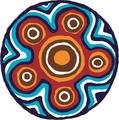Term 2 Mandarin Overviews

Mandarin Term 2
Year Level | Term 2 |
| Prep | In Term 2, Preps will embark on a journey to learn Chinese numbers from 1 to 10. They will be exposed to the stroke orders for each number character in writing. Additionally, students will delve into the significance of lucky and unlucky numbers in Chinese culture. Moreover, they will engage in exploring the story of the Dragon Boat Festival, uncovering its cultural significance to the Chinese people and comparing it to their own culture. |
| Grade 1 | In term 2, students will be introduced to the vocabulary for like and dislike as well as the sentence structures for "What fruit is this? This is... (fruit name)." Students will learn that in Chinese language we put "不" (bù) in front of a verb to negate a verb. They are also going to explore that in Mandarin the structure of a simple sentence is different from that of a simple question. Students are going to participate in interactive activities such as worksheets, multiple exposures, crafts and singing in the Mandarin class. |
| Grade 2 | In Term 2, students will learn to express dates in Mandarin, including the month, and date format, such as 06/30. They will also explore constructing simple sentences to express their birthdays, such as 'wǒ de shēng rì shì...' (my birthday is...). Additionally, students will master singing the 'Happy Birthday' song in Mandarin and make a birthday handcraft. |
| Grade 3 | In term 2, Grade 3 students will develop their ability to express understand and express dates, months, and birthdays in Mandarin. Over the first few weeks, students will review numbers 1 to 31 and learn how to say months and dates in Mandarin, with interactive games to practise the months and dates. By Week 5, students will focus on describing their own birthdays and will achieve the ability to describe a date in Mandarin. In the following weeks, they will create their own birthday calendars and practise asking and answering questions about birthdays. The term culminates in a project where students conduct a survey about classmates' birth months, collect data, and represent it using graphs, while also learning vocabulary related to graphing and measure words. The key achievements of this term include describing dates and birthdays in Mandarin and representing data in a visual format using the language. |
| Grade 4 | In term 2, students are going to learn the different currency from Australia and China, also understand the conversion rate of exchanging money from Australian dollars to Chinese Yuan. Students will also expand their knowledge of numbers from 0 to 100 and apply this understanding to real-life contexts, such as currency conversion between Australian dollars (AUD - 澳币) and Chinese yuan (RMB - 人民币, ¥). They will learn essential vocabulary and expressions for shopping in a Chinese-speaking environment, including asking "这个多少钱?" (How much is this?), practicing bargaining skills, and responding with phrases like "便宜点" (Can it be cheaper?), "太贵了" (It's too expensive!), "不行" (Not acceptable), and "可以/好" (Okay/good). Students will also explore the roles of 店员 (shop assistants) and 老板 (store owners) in market settings. Additionally, they will gain an understanding of Chinese currency units, including 元 (yuán) and 角 (jiǎo). Through engaging role-plays, real-life simulations, and interactive activities, students will develop confidence in using Mandarin for everyday shopping scenarios. |
| Grade 5 | In term 2, students are going to create a weekday timetable integrated with clues and Chinese time-telling presents an enriching and interactive learning opportunity! The provided template furnishes a framework for students to engage with, encouraging them to decipher clues like time indications in Chinese characters and corresponding class subjects. Tailoring the activity to accommodate varying levels of Chinese proficiency and familiarity with timetable creation ensures an inclusive and stimulating learning experience for all students. |
| Grade 6 | In term 2, students are reading an imaginary text titled "去书店 Going to the bookstore", students comparing the use of tenses in English and Chinese, for example, how future tense is often expressed through time phrases in Chinese. Students equipped with the skill to ask and answer the question in different ways "现在几点/现在什么时间?What time is it now?” "现在十点。 It is ten o'clock now." Students also learn to tell direction how to go to a book store in the city, such as ”往前走,就是书店了。Head straight, the book store is right there." - Read an imaginary text telling time and direction in Chinese. |
